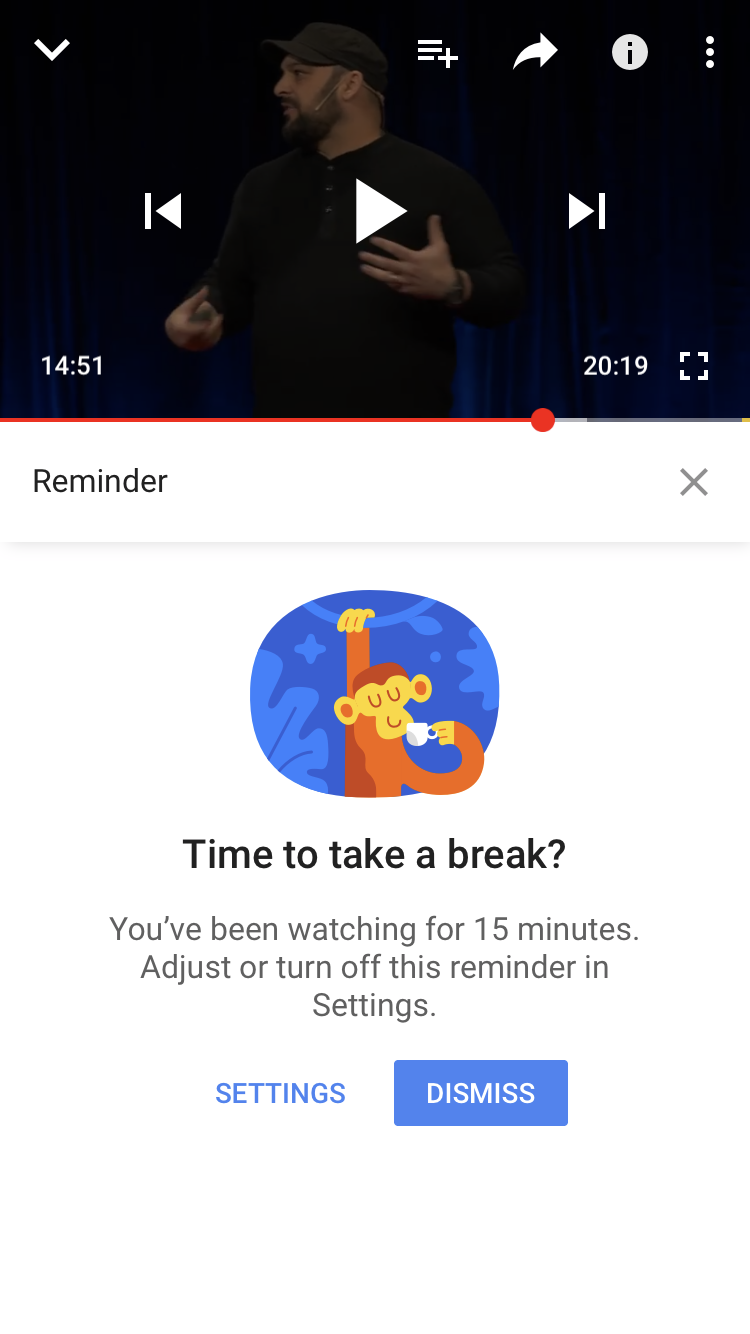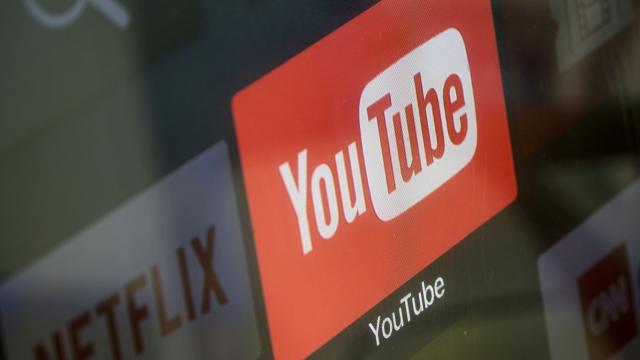Google is well aware that YouTube is the internet’s biggest time suck, sending users down endless rabbit holes of related videos. Now, as part of the company’s apparent newfound interest in digital wellbeing, it’s introducing a feature that will encourage people to step away from the endless stream of videos — but only if they opt into it.
Photo: Getty
During Google I/O 2018, the company introduced new “take a break” notifications that will gently nudge users to find something else to do other than watch another hour of illegally uploaded clips from TV shows uploaded at 1.25x speed to avoid the automatic copyright detection system or whatever.
The new feature is accessible by visiting your profile on the YouTube mobile app and opening the Settings menu. Under the heading “YouTube” there is a setting labelled “Remind me to take a break.” The user can choose the frequency with which YouTube delivers this notification: never, or every 15, 30, 60, 90, or 180 minutes.

Screenshot: YouTube app
The default setting, of course, is “never” and most people likely won’t go out of their way to set up the notification, so the nonstop streaming sessions that YouTube’s algorithms have been tuned to create probably won’t come to an end any time soon.
These long sessions of video watching occur by Google’s own design. Speaking at a panel at CES 2018, YouTube Chief Product Officer Neal Mohan said the average viewing session on the YouTube mobile app lasts longer than 60 minutes, and about 70 per cent of the time spent watching videos on YouTube is dictated not by the user but by automated recommendations.
As we’ve learned in recent months, YouTube is pretty good at getting people to continue to watch, but it’s pretty terrible at actually moderating its content. That’s how its algorithmic suggestions have produced all sorts of weird and often inappropriate videos that it has served up to kids — a problem that got so bad the company had to announce that it would bring in human moderators to vet the content available through its YouTube Kids platform.
YouTube’s algorithms are also responsible for recommending Alex Jones videos for than 15 billion times.
Google can pitch its concept of digital wellbeing all it wants. The fact is, it’s trying to correct for a problem it created and is far less invested in that outcome because it would potentially hurt its bottom line. Here’s all you need to know about where the company’s interests lie: autoplay, the feature that queues up a recommended video and plays it without any input from the user, is on by default.
The new “take a break” notifications have to be turned on manually.
